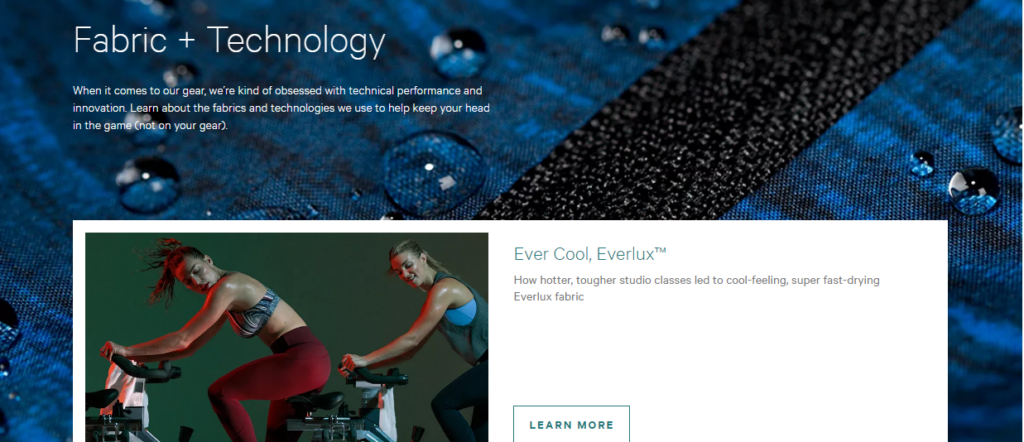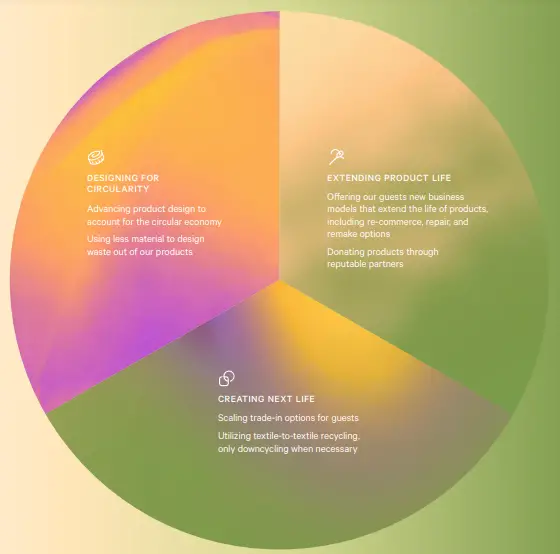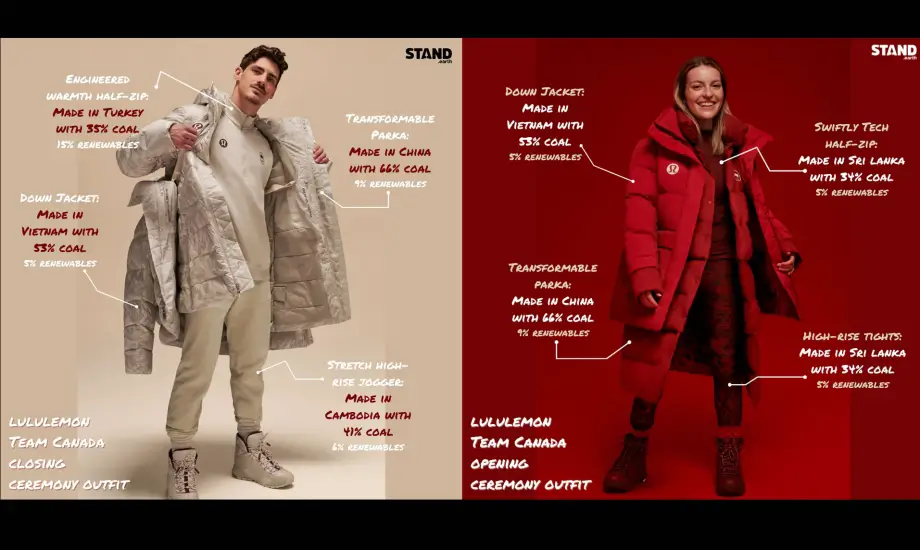The issue of brand sustainability is one of the most talked about issues in recent times. This is due to the increasing threats posed by the unsustainable use of natural resources and the high rate of carbon dioxide emissions which have led to the climate changes experienced all over the world.
Climate change has made individuals, business corporations, and governments rethink how they conduct business and the effects of their actions on the environment. This has led to the question which this article seeks to answer, is Lululemon sustainable?
Lululemon Athletica is one of the biggest athleisure companies in the world which was established in 1998. The company is a retailer of athletic apparel, skincare products, footwear, and accessories.
The brand boasts over 34,000 employees and 670 stores spread across several countries including the United States, Canada, United Kingdom, South Korea, and Sweden.
Considering the brand’s global presence and the extensive nature of Lululemon’s supply chain, it is important to know whether this brand is sustainable or not.
See also: Lululemon Target Market and Customer Base
Is Lululemon sustainable?
Currently, in 2023, Lululeemon is yet to achieve 100% sustainability. However, the brand aims to become 100% sustainable by 2030 based on its impact agenda. Lulemon’s impact agenda is founded on three principles, be human, be well, and be planet.
In the 2023 Fashion Transparency Index, Lululemon scored an overall 51% based on the index ranking in 5 main areas which include policies and commitments, governance, know, show and fix, supply chain traceability, and spotlight Issues.
Each year, the spotlight issues vary and for this year, the spotlight issues include six areas which are:
- Gender and racial equality
- Decent work includes collective bargaining, forced labor, purchasing practices, living wages, and unionization.
- Water and chemicals.
- Sustainable sourcing and materials
- Climate change, fossil fuels and biodiversity
- Overconsumption, business models, waste, and circularity.
According to the index, brands scoring between 51-60% are:
Disclosing all of the information already described in the other ranges and will likely be publishing detailed supplier lists.
These brands will be disclosing most human rights and environmental policies, procedures, social and environmental goals and information about their governance and due diligence processes.
They will likely be publishing some detailed information about the findings of their supplier assessments.
These brands will be addressing many of the Spotlight Issues such as carbon emissions; gender equality; sustainable sourcing and materials; energy use, waste and circularity; decarbonisation; water and chemicals; living wages; waste and circularity.
Fashion Transparency Index 2023
See also: Lululemon Strategic Sales
What does Lululemon do to be sustainable?
Lululemon adopts 3 main approaches in its effort to achieve sustainability in its operation. These include using less water, innovating more sustainable materials for its products, and creating circularity through encouraging the reuse of its products.
See also: Lululemon’s Competitive Advantages and Strategy
Lululemon sustainability analysis
- Reducing water usage
- Innovating sustainable materials
- Creating product circularity
Reducing water usage
One of the ways Lululemon is pursuing sustainability is by reducing the amount of water used in its product manufacturing process. This decision is based on the receding levels of spring and ground water which have been caused by climate change.
The brand intends to reduce water usage by innovating more water-efficient processes in its product manufacturing. For example, the brand’s innovation of a solution-dye process for application in more complex nylon products reduces the amount of water used in dye application.
Lululemon states that it is committed to reducing the average freshwater usage in its product manufacturing by 50% by 2025.
Innovating sustainable materials
Another way through which Lululemon is pursuing sustainability is by using sustainable materials in its products. The company aims to achieve at least 75% sustainable materials for its products by 2025. This will include fibers that are recycled, regenerative, sourced responsibly, or renewable. They would also be manufactured using processes that have a lower impact on natural resources.
The brand specifies that:
Our intent is to design all our products for long-lasting performance, beauty, and sustainability. We adopt better fibres, evolve manufacturing processes, innovate net new materials, and engage industry collaborations to help evolve collective solutions.
And we assess impacts using the Sustainable Apparel Coalition Higg Materials Sustainability Index (Higg MSI) and select life-cycle analysis methodologies. Our goal is for all our materials to come from traceable sources.
Lululemon
Currently, Lululemon has made significant progress in embedding sustainability into the following materials:
- Forest-based material
- Cotton
- Polyester
- Nylon
- Animal-derived materials

Forest-based material
Lululemon uses natural rubber and regenerated cellulosic materials such as rayon, viscose, lyocell, and modal in some of its products.
Since 2018, almost 100% percent of the regenerated cellulosic fibers used in the brand’s products have been sourced responsibly. The brand uses CanopyStyle Audits to verify that its producers are at low risk of sourcing from controversial sources, ancient, or endangered forests.
When Lululemon set up its impact agenda in 2020, it had a plan to have 100% of its forest-based materials third-party audited or certified by 2023.
However, due to the brand’s effective implementation and adoption of innovative materials, it was able to achieve 100% of its forest-based materials third-party audited or certified.
A case in point is the use of Forest Stewardship Council (FSC)-certified natural rubber in the brand’s yoga mats. The brand has also launched
products using a fabric blend made up of up to 30% recycled cellulose from waste cotton instead of virgin wood feedstock. The fabric is known as REFIBRA and is made by the Lenzing Group.
Cotton
Cotton was the third-largest material used in Lululemon products in 2022 and to achieve sustainability in this aspect, the company has been committed to sourcing it from suppliers who have been certified or identified with sustainable cotton platforms.
The company has partnered with stakeholders in the cotton farming, processing, and manufacturing industries in several ways. One such way is by supporting markets and suppliers that are certified to produce organic, regenerative, or recycled cotton.
The brand also supports farmers in improving farming practices, taking into cognizance the amount of water used, field-specific soil conditions, nutrients, and other factors that may affect the cultivation of cotton. This is aimed at maintaining and restoring local environments while increasing the cotton yield.
By adopting these practices, Lululemon hopes to improve its existing cotton supply chain while minimizing the environmental impact of cotton cultivation and processing. The company also aims to ensure greater visibility into social and animal welfare as a direct or indirect result of cotton farming.
Polyester
Polyester is the largest procured fiber by Lululemon in 2022. It comprised 34% of the fibres bought by the brand which represents 12,138kg of polyester.
The company is pursuing sustainability in the polyester it uses by aiming to have 75% of the polyester it uses sourced from recycled content by 2025. As of 2022, the brand has achieved having up to 55% of the polyester it uses made from recycled content.
Lululemon uses polyester made from post-consumer single-use packaging such as plastic bottles. By ensuring that a large percentage of its suppliers make polyester from used plastics instead of fossil fuels, the brand has reduced energy use in its polyester production supply chain by up to 45% and carbon dioxide emissions by 30%.
Nylon
Nylon is made up of 33% of the materials used by Lululemon. It is an essential material that provides the brand’s apparel with certain characteristic features such as being soft to the touch, sweat-wicking, high tenacity, and abrasion resistance.
In the brand’s pursuit of sustainability, the company plans to transition from using virgin nylon fiber to using only renewable, recycled, or newly innovated nylon fibers by 2030. This will reduce the brand’s dependence on fossil fuels without compromising feel and performance.
Although 100% sustainability in nylon seems very unlikely considering that only about 8% of the nylon used by the company in 2022 was sourced from renewable or recycled content, the brand is however committed to launching alternative platforms by 2025 to help meet this target.
For instance, Lululemon has a multi-year investment with Geno, a leader in biotech innovation and materials. The investment is aimed at incorporating renewably sourced materials into Lululemon’s product lines, including lower-impact, plant-based nylon. They also intend to achieve commercial scaling of these renewably sourced materials.
In April 2023, Lululemon launched a pilot of Swiftly and Metal Vent Tech
Short Sleeve Shirts which are composed of plant-based nylon. They are also exploring the option of recycled nylon made from post-industrial material waste.
In addition, they launched a plant-based nylon 6 which focuses on a
bio-based solution for the precursor to nylon 6, caprolactam. They are also working toward solutions for the building blocks for nylon 6,6, which will focus on bio-based or recycled sources for adipic acid and
hexamethylenediamine (HMD).
These are some of the few ways Lululemon has worked on innovation and development to produce sustainable nylon fibers, meet their performance requirement, and are scalable in the long term.
Animal-derived materials
For the animal-derived materials used by Lululemon such as wool, silk, down, and cashmere; the brand aims to reach 100% sustainability by 2025 and as of 2022, it has already achieved 75% sustainability. The brand stated in its impact report that:
While animal-derived materials are a small portion of our materials portfolio, animal welfare is a priority for us. We’re committed to upholding strong animal welfare practices, including:
Since 2016, 100% of our down has been fully traceable and certified by the Responsible Down Standard (RDS).
We are working toward responsibly sourced wool that is traceable and preferably certified by a third party, such as the Responsible Wool Standard.
We’re also working on innovative alternatives to some animal-derived materials – with advances to come in the next few years.
Lululemon
Creating product circularity
Creating product circularity is another strategy that Lululemon is employing to reach its sustainability goals. They aim to do this by offering their consumers new options to resell, repair, and/or recycle their products as a means of keeping the products in use as long as possible.

Lululemon is committed to transforming its operations to focus on circularity through the following means:
New consumer options
Lululemon refers to its consumers as guests and has launched an initiative called Like New through which its guests can resell their gently used clothes to others. This initiative was launched in May 2021 and has recorded tremendous success in reducing the amount of clothes that would have ended up in landfills.
In 2022 and 2023, Lululemon states that 100% of Like New profits will be used to support the Apparel Impact Institute’s Fashion Climate Fund. The fund aims to implement and advance projects that reduce carbon emissions by 2030.
Circular design
Lulemon has engaged its designers to bring circularity to life through training tools and innovation labs aimed at providing design solutions that consider the product’s impacts throughout its life cycle.
When designing products they consider multiple key decision points that impact carbon footprint and lifecycle, including material choice
manufacturing processes, intended product use, and disposal. They also consider the reduction of waste, extending product life cycle, and enabling end-of-life solutions toward more circular ecosystems.
Product recycling
Lululemon resells, donates, or recycles over 90 percent of its damaged and excess products such as returns, in-store damages, and quality issues. They partner with Medshare to donate masks and Good360 to donate clothing and support people in need. These organizations distribute the brand’s products to a network of diverse non-profits.
The main recycling partner of Lululemon is Debrand. They sort, grade, and prepare Lululemon products for recycling. They do this through their network of reuse and recycling partners. Some of the products obtained through the recycling efforts include insulation and stuffing
for mattresses, furniture, cars, and sporting equipment.
Additionally, damaged and excess footwear are recycled into stable comfort pillows and blow-in insulation. Damaged yoga mats are recycled into an equestrian footing product. Any product that cannot be recycled or reused is processed in a waste-to-energy facility.
Lululemon further adapts infrastructure to take back products after first use and recycle materials into a valuable next life, including fiber-to-fiber.
See also: Lululemon Marketing Strategies and Marketing Mix
What are the sustainability issues with Lululemon?
The sustainability issues with Lululemon are mainly those associated with the sustainable sourcing of raw materials for its products, the use of renewable energy sources within its supply chain, the development and scaling of alternative materials, and the effective recycling or disposal of damaged products and waste.
In 2022 for instance, Lululemon used about 5,972 kg of cotton in its products which represents about 16% of the key material used by the company and the third largest by volume. Although Lululemon plans to achieve sustainably sourcing 100% of the cotton it uses by 2025; the brand has only been able to achieve sustainably sourcing 19% of the cotton it used in 2022. This indicates that the brand still has a long way to go in achieving sustainability in its cotton supply.
One sustainability issue that is of great concern is the decarbonization of the brand’s supply chain. Although the brand is committed to using renewable energy sources in its stores, lab, and distribution centers; it has been reported that only 2% of suppliers within its supply chain process use renewable energy. Thus, environmental protection advocates have called on the brand to support its suppliers and product manufacturers to also make the move away from using fossil fuels and adopting renewable energy options.
Another sustainability issue faced by the company is finding recyclers that can convert finished products back into yarn. Currently, in 2023, technical solutions for textile recycling are highly limited to cotton and polyester. However, Lululemon has partnered with Debrand to pilot textile-to-textile recycling technologies with their vetted partners and broader recycling infrastructure solutions.

The time taken to develop sustainable material for the brand’s diverse array of products is another challenge towards achieving sustainability. Sustainable material innovation is a complex process that requires years of investment in research, development, and partnerships.
Although Lululemon has been able to achieve some success such as the creation of recycled polyester made from plastic bottles, a lot still needs to be done to find scalable and permanent solutions in the development of sustainable materials. The brand has also made improvements in areas such as low-water dye inputs, low-water garment dye washes, and recycled dye inputs.
It is therefore safe to say that although Lululemon is facing several sustainability issues, the brand has made considerable investments and engaged in partnerships specifically aimed at meeting its 2030 sustainability goals.
See also: Tesco Competitive Advantages and Strategy
Conclusion
Currently, in 2023, Lululemon is 51% sustainable, the brand however aims to achieve 100% sustainability by 2030. The brand has taken several steps to achieve supply chain sustainability and ethics. Lululemon has actively established partnerships with several companies and organizations including product suppliers, manufacturers, and product recyclers.
For suppliers and manufacturers, Lululemon requires them to adhere to its ethical regulations and guidelines. This provides a guide on how materials should be sourced and the elimination of unsustainable and harmful practices within the supply chain such as poor wages, unsustainable farming, and raw material sourcing practices.
Lululemon engages in various organizations and partnerships advocating for sustainable development, aiming to reduce environmental impact, such as carbon emissions, water consumption, and promoting circular economy initiatives. They are also adopting practices and creating solutions that enhance the brand’s products, minimize negative impact, and contribute to restoring the environment.
Last Updated on November 2, 2023 by Nansel Nanzip BongdapBlessing's experience lies in business, finance, literature, and marketing. She enjoys writing or editing in these fields, reflecting her experiences and expertise in all the content that she writes.
